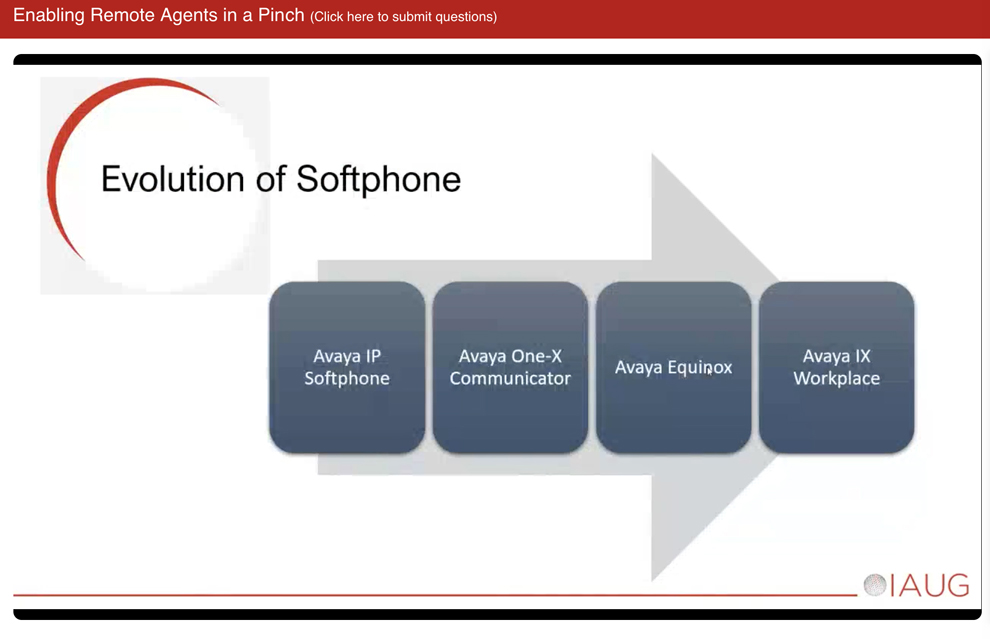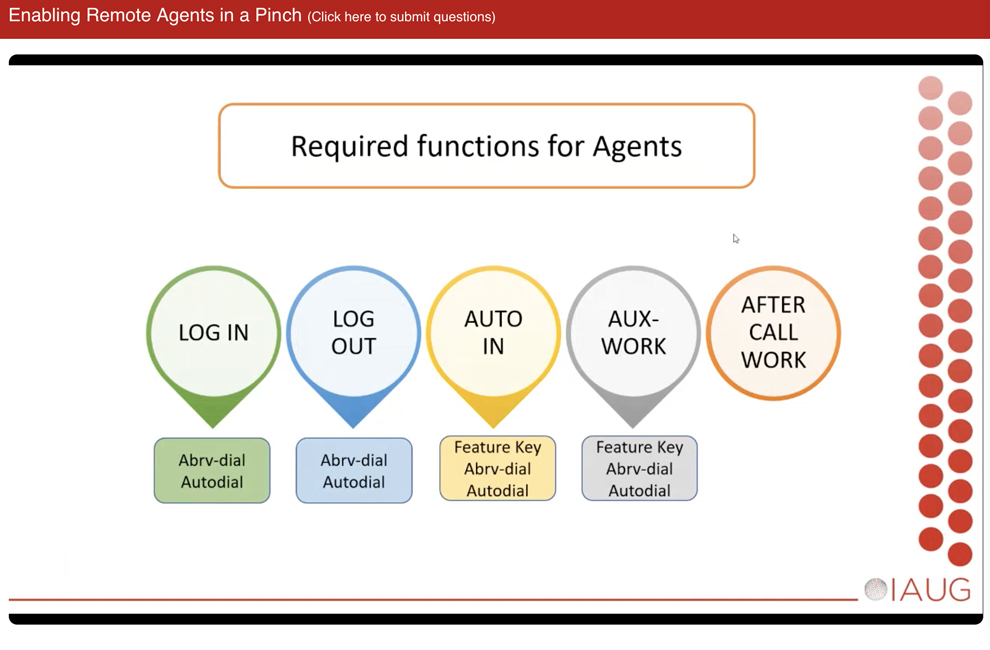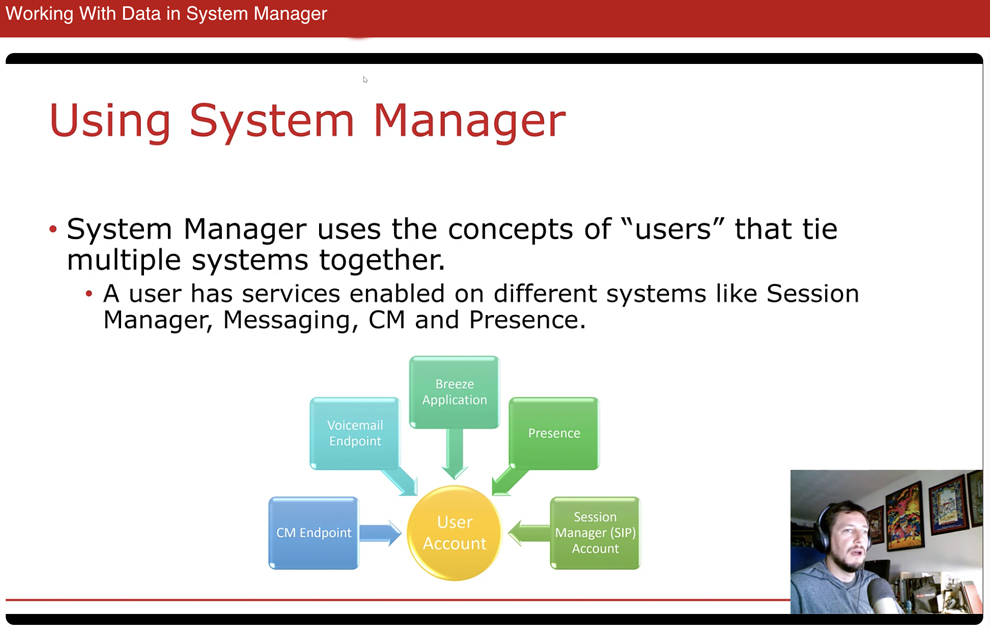If you’ve been wondering about the value of an IAUG membership, consider the practical, expert advice available from Avaya professionals sharing their knowledge. For instance, at IAUG WIRED, the association’s May 20 virtual conference, two IAUG leaders gave step-by-step demonstrations on two important Avaya One-X Communicator and Avaya System Manager (SMGR). Here are a few highlights from their presentations.
Enabling Remote Agents in a Pinch
One of the most timely issues in today’s work-from-home environment is getting remote agents up and running as quickly as possible. “In mid March we had to start working remotely,” said Lori Wodrich, senior systems engineer with Amerisure Insurance, in her a presentation on “Enabling Remote Agents in a Pinch.” She added, “We were heavy users of cell phones but not for our agents. I thought we had to pay extra for our agents to log in on Avaya IP softphones, but found we could get free licenses.”
Wodrich outlined Avaya’s softphone evolution path through Avaya One-X Communicator to Avaya Equinox to Avaya IX Workplace. “We still have H.323 endpoints, so we have One-X Communicator in our organization,” she said. “We have not ripped off the bandage and gone to SIP stations.”

She noted that Equinox provides a more collaborative platform with instant messages, chat, presence and meeting features. “Avaya IX Workplace is a newer rendition of Equinox, but you have to have SIP endpoints,” she said. “While One-X Communicator is easier to set up and get going, Equinox and IX Workplace are the future.”
With Avaya One-X Communicator, Wodrich can get a remote agent set up and going in two minutes – as long as you build your workflow processes in advance. That includes considering what the agent will use for an audio device. “When the audio comes through a computer, there may be an echo in calls, so we recommend a USB headset or speaker,” she said. “That setup should also work in IX Workplace.”
Other considers include dialing rules, such as adding a 9 for outside numbers, and integrating the softphone with active directory. “With outbound calls, we make the caller ID is the organization, not the agent’s personal cellphone.”
She also includes autodial features for four key functions: logging in, logging out, on break (auxiliary work) and after-call work. “All they have to do is push the buttons and they are good to go,” she said. “The last step, though is to provide a user guide, based on how you set things up. Don’t take the agent’s knowledge for granted!”

Working with Data in System Manager
In an afternoon presentation, Nick Kwiatkowski, senior manager, unified communications team, Michigan State University, outlined the benefits of using Avaya Aura® System Manager – a central management system that delivers shared management services and provides simplified deployment of unified communications and contact center applications.

System Manager (SMGR) allows you to import and export data from connected servers in a variety of formats, including Excel, CSV, PDF and XML. “SMGR pushes your data to connected systems, resulting in quicker administration,” Kwiatkowski said. “You can add a new user or update a current user and that change will be made in voice mail, automation tools, presence and other systems. That’s much easier than doing updates in multiple platforms.”
With SMGR, administrators can also create templates with common properties, such as groups of stations, voicemails or agent accounts, Kwiatkowski said. “So if you get a new department with 30 users, you can create a template and build those accounts more rapidly.”
Avaya’s central management system also lets administrators build properties directly for the user, such as creating initial passwords, or setting a certain ring tone for SIP stations.
“If you are provisioning SIP phones, you need to use System Manager to care for them,” he added. “If an employee leaves, it will auto delete everything, reducing your security risks.”
NOTE: IAUG members can access the full presentations for 30 days after the virtual conference, by clicking on the registration link, signing in, and entering the auditorium.

Very interesting points you have remarked, regards for posting.